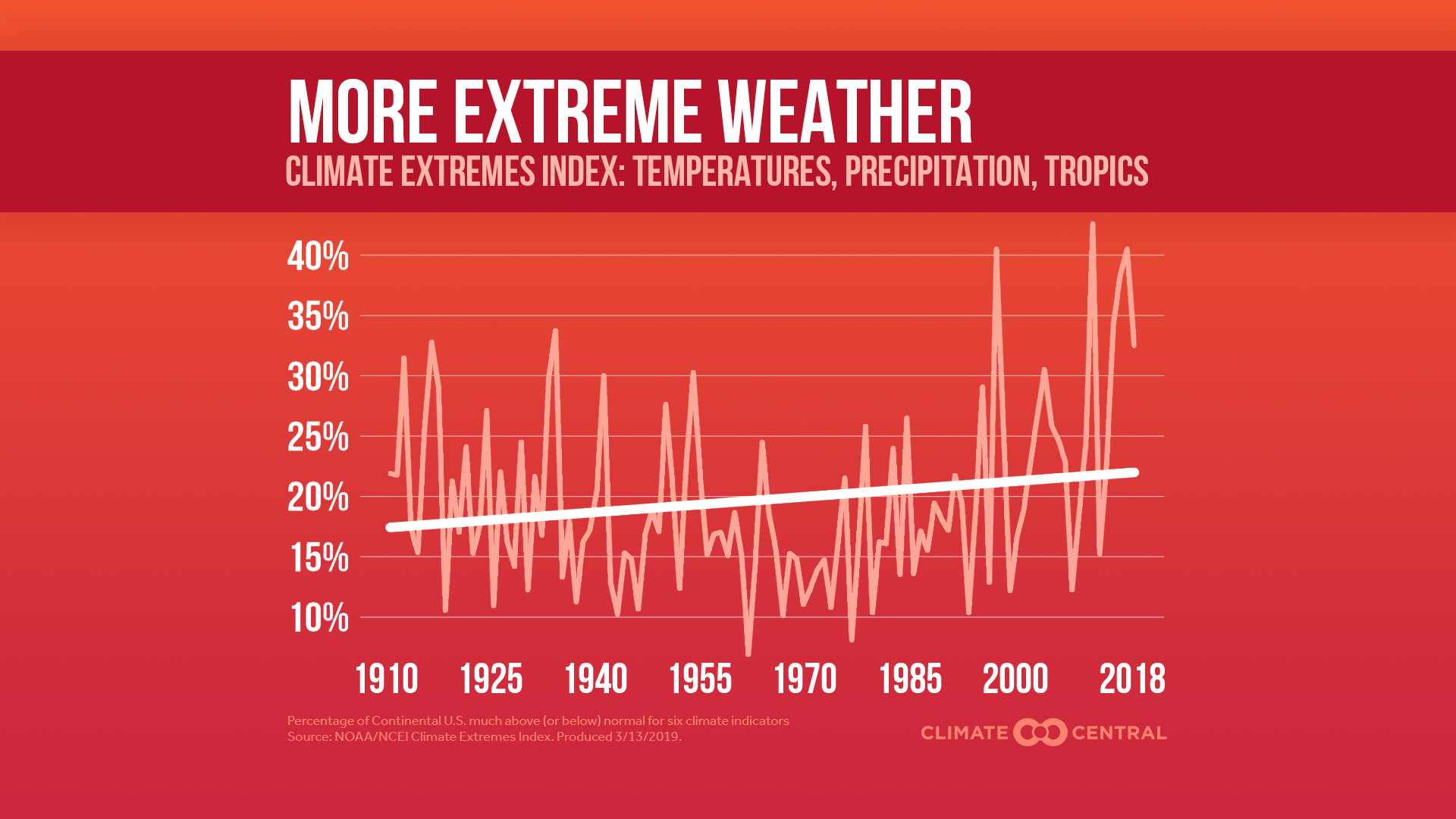Surging floodwaters in Guerneville, California. Record snowfall from Eau Claire, Wisconsin to Flagstaff, Arizona. Mudslides in Tennessee and North Carolina. The past month has been full of extreme precipitation, making it the wettest winter on record for the contiguous U.S.
Heavy rain is a hallmark of climate change. A 1oF increase leads to 4 percent more water vapor in the atmosphere, strengthening downpours. As the NOAA/NCEI Climate Extremes Index indicates, the 10 years with the most extreme 1-day precipitation have all come since 1995.
The trend is part of a broader increase in extreme events. The NOAA/NCEI Climate Extremes Index evaluates the percentage of the contiguous U.S. that is much above (or below) normal for six indicators related to temperature, drought, precipitation, and tropical cyclones (includes full range of organized tropical systems). Even though the data goes back to 1910, four of the top five values occurred in 2012, 2015, 2016, and 2017 (2018 was eighth). Among these different climate extremes, water imbalance issues stand out. As we reported last month, the projected climate impact of highest risk for two thirds of the country is extreme precipitation, drought, or water scarcity.
HAPPY ST. PATRICK’S DAY!
According to one investment firm, March 17 ranks fourth in the amount of daily alcoholic drinks consumed in the U.S. But trouble is brewing for these holiday beers. Hops, water, and barley — three of beer’s key ingredients — all suffer from extreme heat and drought, which are worsening in a warming world. According to an October 2018 study in Nature Plants, beer prices could double by 2100 if the world’s climate-warming emissions continue unchecked. Such a change could impact locally owned craft brewers, which contributed $76 billion and more than 500,000 jobs to the U.S. economy in 2017. To respond to the threat, several breweries have signed a Brewery Climate Declaration — signaling their commitment to renewable energy and waste reduction. With steps like these, your St. Patrick’s Day brew could be green in more ways than one.
Explore Beer and Climate Change and The Climate of Local Brews.
Methodology: The Climate Extremes Index has been developed and calculated by NOAA/NCEI. Beer economic statistics are provided by the Brewers Association for Small and Independent Craft Brewers. Their full economic impact methodology can be found here.
